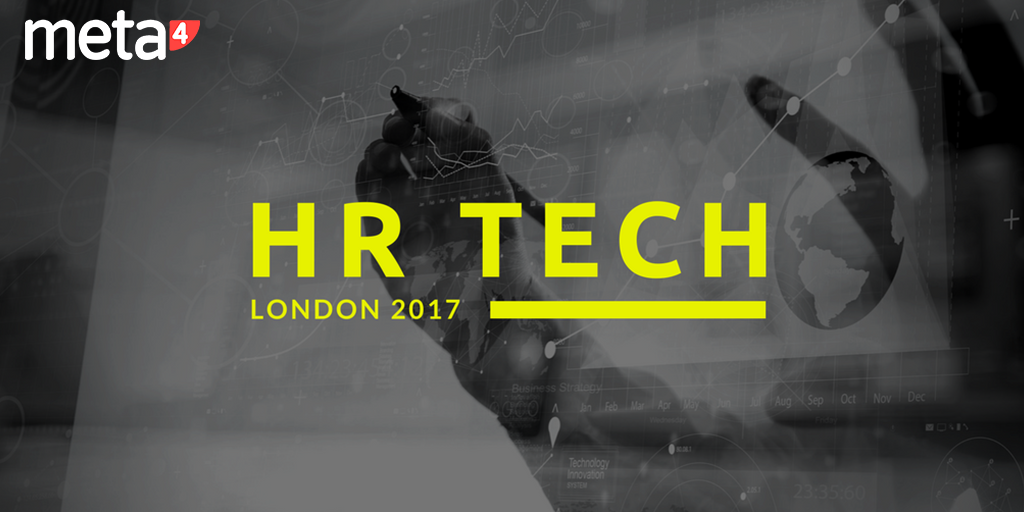Many interesting topics were discussed at the HR Tech Conference in London. Here we focus on some of the current thinking, discoveries, or case studies that will shape our future.
-
New demographic shifts and employment trends
Traditionally a company would control how and where people work. Now that is changing dramatically; many people increasingly have more control and choose what they want to work on. Business paradigms have shifted in this direction; new companies like Uber usurp the taxi industry, and Airbnb puts the hotel industry under enormous pressure. The gig economy is growing too. Such changes are blurring the lines between employees and independent experts or freelancers who collaborate with the company.
Pat Petitti, founder and CEO of Catalant technologies, put forward some highly relevant figures based on his company’s research on the latest demographic shifts and employment trends that we should all keep in mind:
- People increasingly have more control of how, where and when they work.
- 84% of executives believe that most great people, ideas and capability lie outside of their company.
- Most of the things disrupting our businesses – the people who understand them won’t work with our companies.
- 40% of US companies can’t fill the positions they need.
- 75% of executives believe their company needs to evolve its approach to work format and people location to be successful.
For the workplace of the future, we need to think differently about how to find the right person at the moment we need them. We also need to be agnostic to employment status to accommodate employees and independent experts/freelancers. How to best access this pool of experts in a company’s network will become a strategic challenge.
-
Creativity and innovation are crucial for survival
Given these new shifts and trends, HR must be at the centre of change to see how to bring on board the skills needed, whenever and wherever. Sir Ken Robinson reinforces this imperative. He stresses that only organisations providing environments which develop and uncover the full innovation and creativity of their people will survive in the future.
Creativity and innovation have always been important, but what’s different is the context in which we live in today. Innovation is increasingly an outcome of collective effort and not individual geniuses as in the past. There is a need for collective creativity and innovation where each person counts and contributes, be it an employee or an external consultant.
-
HR must be ‘Smart, Bold & Brave’ to deliver Employee Experience
We need to think about employee experience as much as customer experience. If we make efforts to engage and maintain customer loyalty, then HR should also work to engage and maintain employee loyalty in order to reap the benefits of investing in their employees.
Employee automation is not the same as digitization—it is one thing to automate processes and make them available, but it is wholly another to reimagine them from an employee’s point of view and use technology to support employee experiences.
Jason Averbrook, a leading HR analyst, stated that HR must become “smart, bold and brave” to think about what kinds of rich employee experiences they can create to be compelling, just like our smart phones for us. However, many companies are still dealing with adoption challenges in HR issues.
-
User-focused design in performance management to reflect generational differences
An international bank decided to review its performance management policies and discovered that employee preferences in performance management are much less aligned with country of origin and more with generation.
For instance, managing Millennials is a challenge compared to previous generations as they are more demanding, want feedback immediately, don’t mind giving feedback upwards or to the side, and often think they could do more than they are currently doing.
Different generations have different needs, so designing performance strategies must take a user-centred approach to offer options to employees based on their preferences. By meeting such demands, a better employee experience can be delivered.
-
Continuous performance appraisal here to stay
The current trend for continuous performance appraisal is here to stay. This becomes even more relevant for a multi-generational environment demanding constant opportunities for personal improvement. Continuous reviews need to consider new formats like employee-led processes empowering them to request and obtain feedback themselves.
So, if your company hasn’t started to deploy continuous performance appraisals, it’s time to do so. Employee’s increasingly value a constant feedback channel where they can both receive and give feedback and know that their voice is heard and valued.
-
Tapping internal talent is a part of HR business transformation
Some companies are waking up to the fact that they are not fully tapping into the potential of their internal talent in the way they should. Internal mobility must be developed to be part of the company’s DNA and to open up employees to agile change. This way, employees are not forced to change by mandate from above, but instead invited and encouraged to change within the company.
What are some steps your company can take? Ensure your HR systems provide good analytics to enable you to identify potential candidates internally with ease and speed. Advertise all positions internally and make them accessible, as well as remove blocks in HR processes, e.g. development processes for upskilling, proactively send internal vacancies to employees that might be a good fit or interested, serious investment in internal communications to develop awareness of the internal job market and dynamics.
-
Gradual global HR transformation with simpler and then more complex analytics
Transforming the global workforce through analytics needs to be done gradually. This requires HR teams to build up their analytical thinking skills and preparation to accompany the technology shift to Global HR.
To embark on a Global HR transformation project you need to consider global consistency and degree of standardization in global and local contexts. You also need to consider how integrated processes are. These issues affect analytics which need data points in different processes for measurements. Reporting looks at single data points, but analytics looks at multiple ones and correlates them. So it is best to start off with working with simpler analytics and gradually progress to more complex ones, such as predictive analytics.
Additionally, when HR goes into analytics as part of this transformation, they must be prepared to manage transparency in the company. For example, new visibility on managers who do Performance Management well and those who don’t. How does HR manage this? Such issues must be discussed and settled before starting transformation, so all those stakeholders (HR, managers and employees) involved will participate; otherwise the analytics gathered will be of poorer quality.
-
Big data, machines and the future of recruiting
So much data is available now and the role of AI (artificial intelligence) has huge implications for recruitment. Talent sourcing and advertising will be transformed by AI powered recruiting which can decide where to best advertise for specific jobs and improve this through post-hire performance data. It will also accelerate talent discovery and better match up employees and candidates to vacancies. With AI we can imagine a world, where each of us can eventually have a personal head hunter at our tips.
Many organisations are waiting for the future of work; instead they should make it happen. We should remind ourselves that the outside world drives change—often employees have better technology and user experiences in their pocket than the organization has within. That is a clear example of how the customer experience is still better than the employee experience. HR must change all that.
{{cta(’49e2e337-f6a6-43da-9015-5d18c79d25bc’)}}






